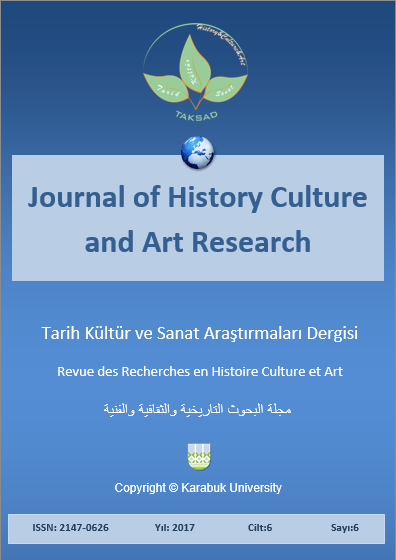Wedding in the History and Culture of the Tatars
DOI:
https://doi.org/10.7596/taksad.v6i6.1328Keywords:
Traditional rituals, Ethnocultural information, Wedding rituals, Tatar linguistic culture, Spiritual culture, Tuy (wedding), Nikakh, Yaychi, Tuy ashi (foods), Kalim.Abstract
The historical period and the associated cultural structure experienced by the nation in the past leave its more or less discernible imprint in the national mentality, which is, in fact, a series of successively overlapping cultural and historical layers. An integral part of the mentality is a set of values in general and each of its elements separately. To determine the semantic meaning contained in any of the values of the concepts of the era, it is necessary to consider not only the circumstance of this particular epoch, but also the historically preceding evolution of this value in the culture of the people. Proceeding from the above, in this article we have described the history of tuy (the wedding) and related social, legal, economic, religious, magical rites, its role, functions in the social life of the Tatar people. In the Tatar linguistic culture, the wedding expresses not only the universal idea of the transition of people marrying to another age and social status, but also is part of the family-household ritual that fixes the transitional stages of the person's life cycle: birth, marriage, death – gumernen uch tuye (three weddings of life). Many ritual acts performed at the time of marriage have deep historical roots, are repeated from time to time, change their content and meaning, but, nevertheless, despite the loss of their integrity, the tendency to wither away, the simplification of some ritual forms, traditional household rituals, being the most conservative sphere, connected with the field of traditional outlook and psychology, have preserved specific ethnic features.
References
Bakirov, M. Kh. (2007). Kotly bulsyn tuyegyz. Kazan: Suz.
Bayazitova, F. S. (1995). Tatar khalkynyn beyrem һem kunkyresh yulalary. Kazan: Tatar. kit. nesher.
Bolgarova, R. M.; Safonova, S. S. & Zamaliutdinova, E. R. (2014). Comparison in Russian and Tatar linguocultures: systemic functional and comparative analysis. Journal of Language and Literature, 5(3), 148-152.
Dewletshin, G. M. (1999). Turki-Tatar rukhi medeniyati tarikhi. Kazan: Tatar. kit. neshr.
Islamova, E. A.; Safonova, S. S. & Bolgarova, R. M. (2014). Written Records of the Kazan Region of the XVI century: Historical, lexicological and lexicographical aspects. Journal of Language and Literature, 5(4), 321-324.
Kovalevskiy, A. P. (1956). Kniga Akhmeda ibn Fadlana o yego puteshestvii na Volgu v 921-922 gg. Issledovaniye po Meshkhedskoy rukopisi. Khar'kov.
Nurmukhametova, R. S. & Sattarova, M. R. (2015). Social, Cultural and Natural Factors in Formation of the Tatars Culinary Vocabulary. Mediterranean Journal of Social Sciences MCSER Publishing, Rome-Italy, 6(6), 55-59.
Sibgaeva, F. R.; Zamaletdinova, G. F. & Nurmukhametova, R. S. (2016). Linguoculturological specific features of phraseological units of the Tatar language. Modern Journal of Language Teaching Methods, December 2016, 116-119.
Urazmanova, R. K. (2001). Obryady i prazdniki tatar Povolzh'ya i Urala. Kazan: Dom pechati.
Yusupova, A. Sh. & Dunayeva, R. R. (2016). Tatar-Turkish interlingual homonymy. Journal of Language and Literature, 7(2), 319-323.
Downloads
Published
How to Cite
Issue
Section
License
All papers licensed under Creative Commons 4.0 CC-BY.- Share — copy and redistribute the material in any medium or format
- Adapt — remix, transform, and build upon the material for any purpose, even commercially.
Under the following terms:
Attribution — You must give appropriate credit, provide a link to the license, and indicate if changes were made. You may do so in any reasonable manner, but not in any way that suggests the licensor endorses you or your use.
- No additional restrictions — You may not apply legal terms or technological measures that legally restrict others from doing anything the license permits.







